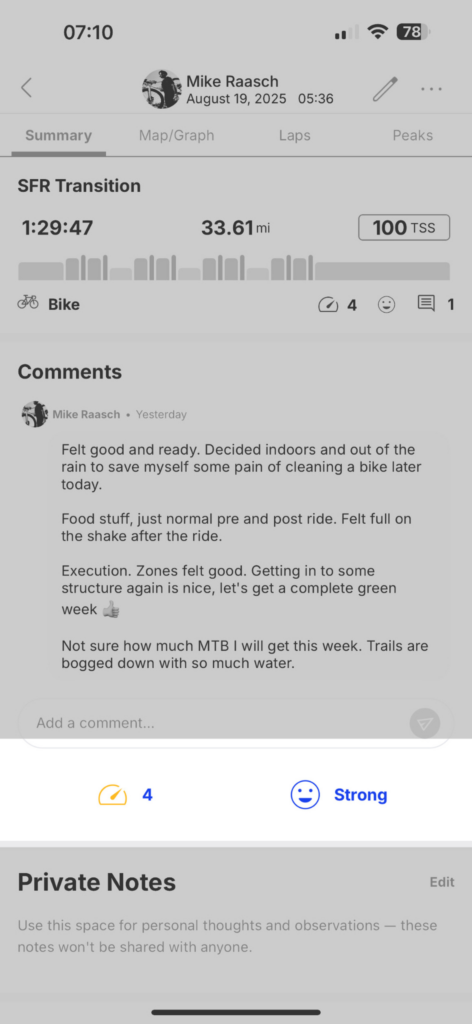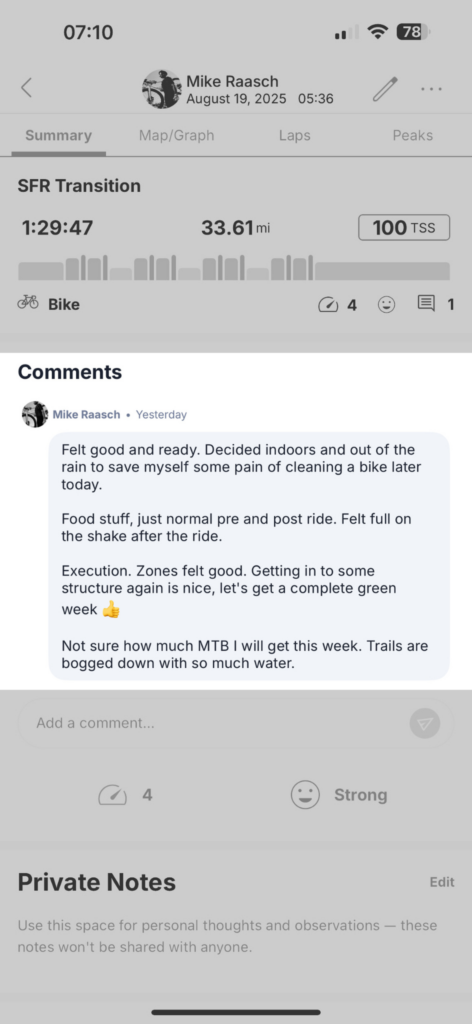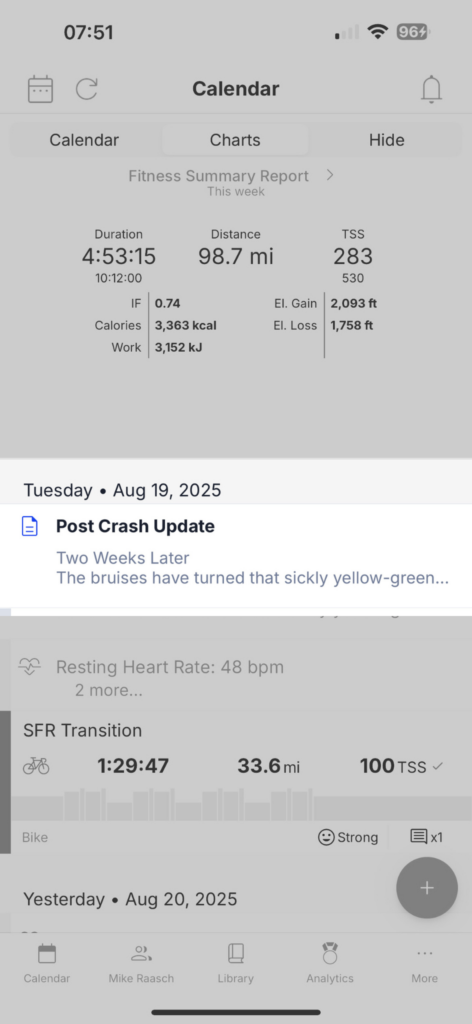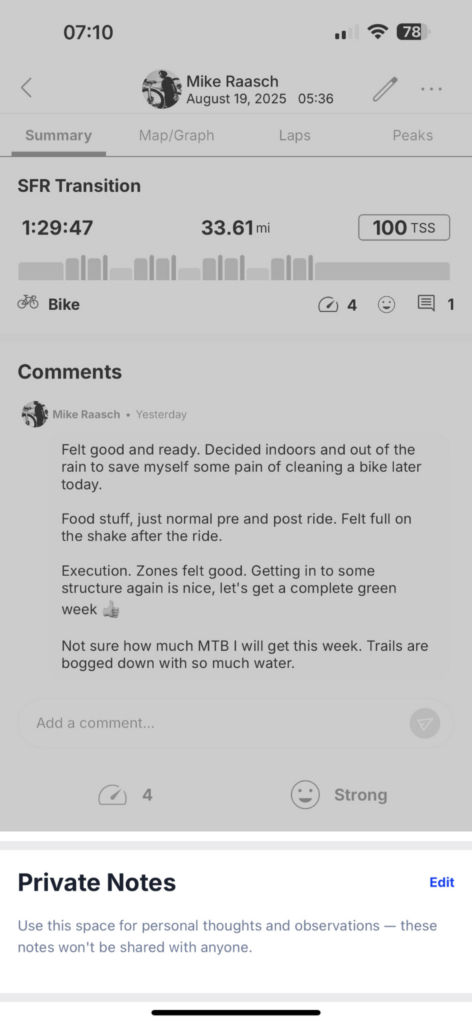人体一级高清图片搜索
Today, there is a device to measure nearly anything imaginable, from power and heart rate to sleep hours and steps per day. Many of these devices sync with TrainingPeaks automatically through Bluetooth or Wi-Fi.
Despite this massive increase in data, we have found that getting athletes to consistently leave comments has become a major pain point for many coaches (even though it’s often the most valuable information).
We turned to some coaches who recognize the importance of athlete feedback and asked them, “How do you stress the importance of keeping a training diary and leaving good post-workout comments in TrainingPeaks to your athletes?”
Simon Kessler
“Keeping good, consistent notes in a training diary is about learning over time how your body responds to the training and what worked and did not work in terms of training, warm-up, pre race/ride routine, nutrition, recovery plan etc.
By keeping good notes one can go back and see from past notes what worked when you had a breakthrough ride or your best race. This makes it easier to replicate what worked for a future racing or a training goal.
When you keep good notes, it also allows your coach to understand better how you managed the training session, as well as your mental and physical state. As a coach I always look at my athletes comments first. An athlete who keeps detailed, consistent notes gives his or her coach the ability to provide for the athlete a higher level of service and customization.
In return, as a coach I like to offer encouragement for a training session well done and also point out in a constructive way what could have possibly been done better. The tone of the comments should always be positive and constructive, even if the athlete fell short on the workout.
I like to use the comments as a way to educate my athletes on TrainingPeaks and the different mathematical models that are used to evaluate their training. The comments can be a platform to have a conversation about the training session with the athlete.
I will often ask a question to my client in the TrainingPeaks comments and they will respond to my question in the comments as well. This works very well to have a specific conversation about the training session and provides greater detail for future reference.”
Andy Kirkland
“Like most questions in coaching, the answer is ‘it depends.’ This is a particularly complex question which cannot be answered through a few top-tips. Rather, the solution lies in your coaching philosophy and the needs and wants of your clients.
For many of us, our clients are people with sufficient disposable income to pay for a coach. That means that they’re around 40-years old, have a good career, and aren’t the best at changing their behaviour.
Our job is to bring efficiencies to their training whilst maintaining a coach-athlete relationship that results in our pay-check arriving. In such circumstances, it’s best for us to chill and not worry too much about the level of feedback provided.
This dynamic changes when working with elite athletes. The physiological adaptation process is dependent on achieving a stress balance in training and life. Training Stress Score (TSS) provides me with around 10 percent of the feedback I need to plan their training, while their feedback gives me the remaining 90 percent.
Without quality feedback, things will invariably ‘hit the fan.’ When they do, that’s the time to strike. I will pull the ‘wise old coach face’ and say ‘if only you had given me quality feedback.’
This can be the catalyst for behaviour change in athletes who are wholly committed to being the best.”
Katee Pedicini
“I feel the main reason athletes don’t write notes comes down to two key things;
- They forget or rush off to do other things so when they do write notes later on, they have forgotten how the session actually felt which waters down the effectiveness of the notes.
- They don’t know what information is relevant or valuable so they either write nothing or write something useless, for example how bad the traffic was on the way to their workout.
With this in mind, I put a few action steps in place for my athletes:
When talking to a prospective athlete I’ve learned that as much as they are interviewing me for the role as their coach, I too need to interview them to ensure they are the right fit for my coaching style.
As such I always discuss the need for notes and communication in an initial consultation. So I ask them: ‘The best way to get the most out of this coaching relationship is to communicate regularly and write post training notes—is this something you are willing to do and see yourself doing?’
I’ve also developed some blog posts in relation to my coaching style and how to get the most out of individualised or personalised coaching.
When an athlete starts with me or starts to drop the ball on notes, I shoot them these blog links as a friendly reminder.
I prompt post-training notes in each session within TrainingPeaks and suggest writing their notes while cooling down or eating their post-training meal.
I feel it’s important to communicate WHAT information is valuable to me from athletes. This avoids no notes, useless notes or too much information.
To communicate this, I provide my athletes with a post-training notes guide that spells out the key areas of the session I would like them to pay attention to and report back on. These include mental resilience, perceived effort, niggles and so forth.”
Nate Wilson
“The first step to getting my athletes to leave daily comments in TrainingPeaks is to convince them that I am not as smart as my glasses make me appear. I explain to my athletes that quantitative data is great, but at the end of the day no number can tell me what their subjective feeling was.
Additionally, often in competition performance, the limiter may be something that doesn’t show up in a number—from poor tactics to poor pre-race nutrition—and anything in between.
Only with their feedback can I actually paint a complete picture and narrow down where we need to work to improve performance. The second step is to convince my athletes that leaving comments will help them, not just help me.
Having a diary of your past performances, how you felt in a certain workout, how you coped with a certain travel pattern—it all is massively valuable. Most athletes have lots of repeats year to year, whether it’s a summer vacation with family, a race that they did the prior year, or whatever.
Having some notes to look back on so that the event (and not just the mistakes) are in one place is one of the most valuable tools to elicit improved performance. Experience beats watts more times than people would think!”
Where TrainingPeaks Can Help
The harder it is to do something, the less likely someone is to do it. That’s why we’ve made it easy for athletes to give feedback on their workouts from their TrainingPeaks Mobile App. In order of easiest to hardest, here’s how you can get your athletes to regularly get your athletes in the habit of leaving feedback (no matter how small) that can make all the difference.
Setup: Download Mobile App and Set Expectations
Make sure your athlete has downloaded the TrainingPeaks mobile app so they have access to their TrainingPeaks account when they’re away from their computer.
Then, set the expectation that you need to have them comment on their workout, preferably immediately afterward, when it’s fresh. We’ve heard from many athletes that they would otherwise comment on their workout, but they’re not sure it’s worth their time because their coach never told them to (and doesn’t comment back if they do!).
Easiest – RPE and Subjective Feeling

After an athlete completes a workout, the easiest thing they can do is open up the workout on their phone and rate the workout by choosing an RPE and Subjective Feeling by clicking on the icons highlighted above.
As a reminder, RPE and Subjective Feeling are self-monitoring metrics that quantify an athlete’s internal training load. When combined with external training load metrics (CTL, ATL, and TSB), the athlete and coach get a complete picture of how that athlete responds to their training and can adjust if necessary.
Even if the athlete doesn’t write out a comment, a coach can infer a lot of actionable feedback if all the athlete does is assign an RPE and Subjective Feeling rating. For more background, please see this article.
Medium – Post-Activity Comment

Arguably, the best feedback a coach can get from an athlete is a well-thought-out post-activity comment. The biggest sticking points to getting one from an athlete are that it takes a little more time and that sometimes it’s tough for the athlete to come up with something to say.
In coaching interviews, we’ve heard that suggesting a post-activity comment format can help athletes with writer’s block. For example, you could direct an athlete to comment like this:
1. Workout Readiness – (e.g., 6/10; couldn’t fall asleep bc of stress)
2. Workout Execution – (e.g., 5/10; skipped last set after going too hard in the first set)
3. Nutrition – (e.g. 5/10); didn’t eat during my hard 2-hour interval ride, but did eat before and after
4. Misc -(e.g. lower back acting up again)
1-3: Rate out of 10 (10 is the best); add details if possible; e.g., “I ate two 50g carbohydrate bars” or “Felt sluggish to start” etc..
Misc: Have at it, or don’t.
Of course, that’s just one example of a comment format; your format should include the information you need to make the best coaching decisions.
Hard – Notes

Thanks to Notes, your athlete (and you!) can add up to 3,000 words of additional context to any TrainingPeaks calendar day.
Why would that be helpful? Well, so much of what affects training happens outside of training and isn’t always best surfaced (or worth mentioning) in a post-activity comment, but instead in a Note that’s clearly visible when perusing an athlete’s TrainingPeaks calendar.
For example, injury updates, job disruptions, or a quick note on an ailing pet are all contexts that can help keep you in the loop and inform what adjustments you might make to their training plan.
We’ll be the first to concede that this may encourage an athlete to overshare information not pertinent to training or racing, but with a quick conversation, you can direct athletes to add that information to Private Notes.
Bonus – Don’t Forget Private Notes

Private Notes are personal reflections tied to individual workouts that an athlete (or coach) can add about their workout that are only visible to them. If the athlete writes them, only they can see them. Only if you write them can you see them.
It’s worth encouraging your athlete to add Private Notes even if you won’t see them because it increases athlete engagement. If there’s one thing we’ve learned at TrainingPeaks over the years, it’s that the more engaged an athlete is, the better their training and racing go.
The Little Things Go A Long Way
We expect athletes to collect even more data as time goes on, but some of the most valuable data for coaches and athletes requires a little effort from the athletes, which can make all the difference in their training.
Encourage your athletes to provide a little more feedback and see how their training transforms.




